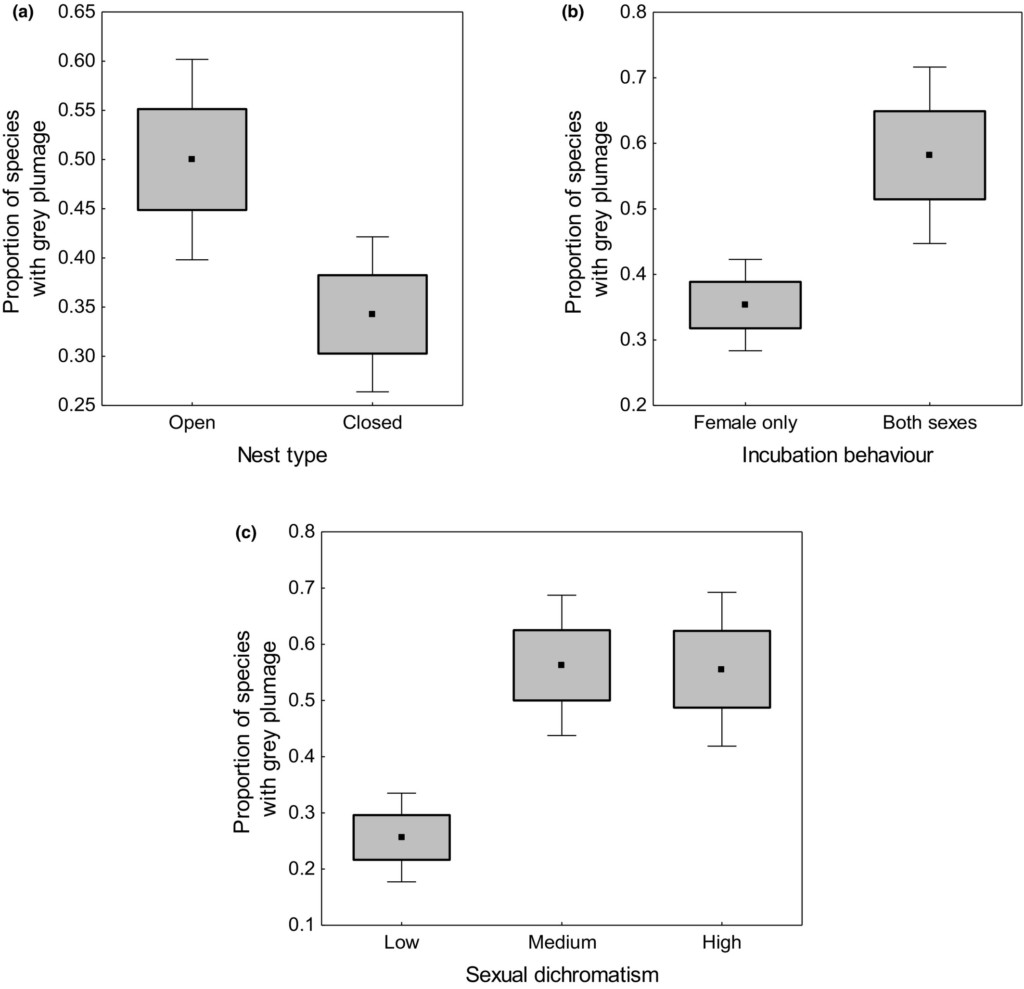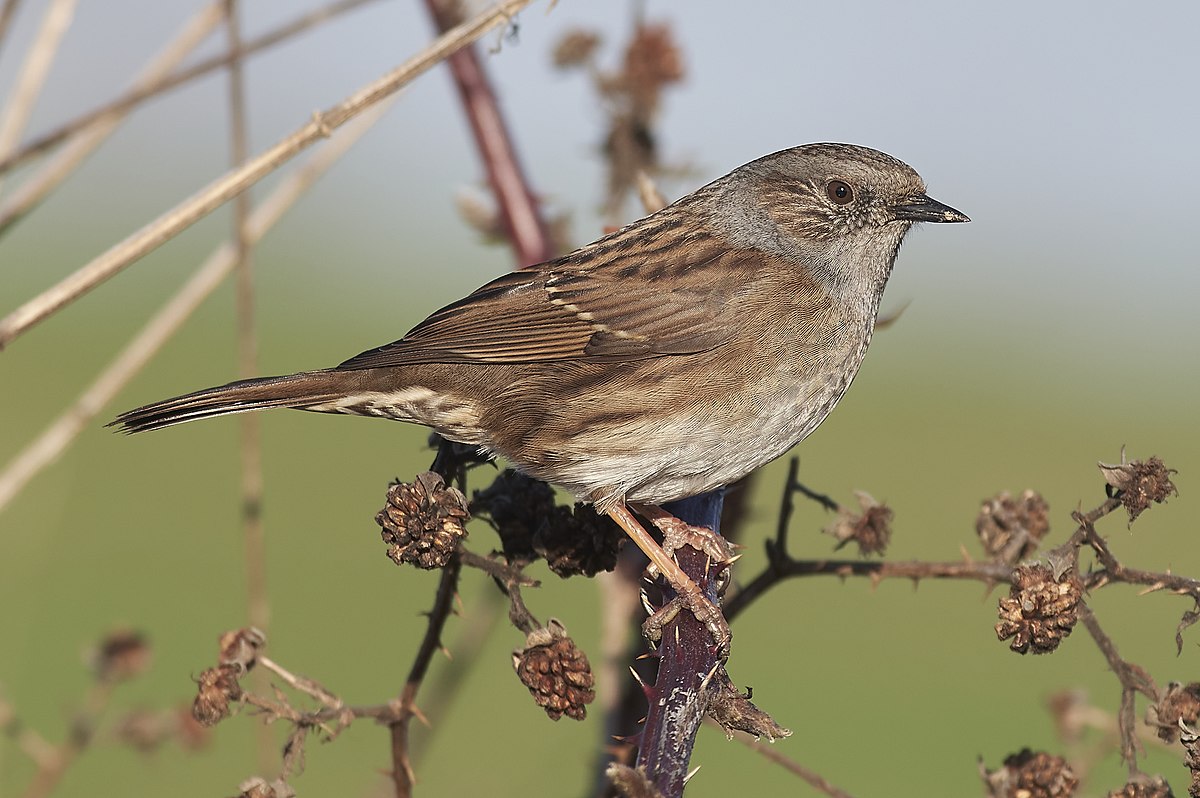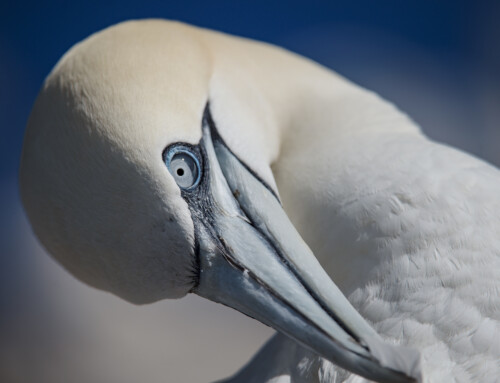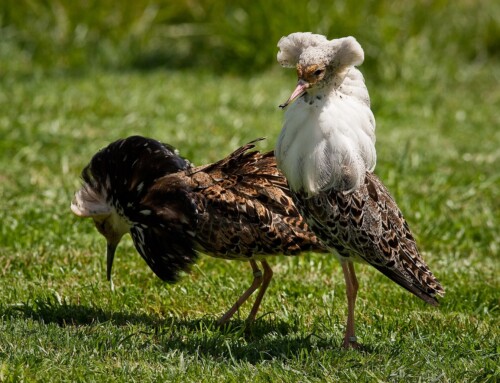 LINKED PAPER
LINKED PAPER
Occurrence and function of melanin-based grey coloration in Western Palaearctic songbirds (Aves: Passeriformes). Surmacki, A., Minias, P., & Kudelska, K. 2021. IBIS. DOI: 10.1111/ibi.12878. VIEW
Birds show an amazing diversity in plumage patterns. Some colors in the plumage palette are the outcome of two chemical variants of melanin: eumelanin and pheomelanin (McGraw 2006). A higher eumelanin content results in black or grey plumage, while more pheomelanin leads to rusty colorations. The variation of these melanin-based colors in birds were shaped by natural and sexual selection. Most research focused on the function of black and rusty colors, whereas the role of grey plumage remains largely unknown. In a recent study, a team of Polish ornithologists tested several hypotheses to unravel the use of grey plumage in passerines.
Four hypotheses
Adrian Surmacki, Piotr Minias and Karolina Kudelska collected information on grey plumage for 239 passerine birds, and correlated this data with several life history traits. This approach allowed the researchers to investigate four possible functions of grey plumage. First, grey feathers might contribute to camouflage, helping the birds in hiding from predators. Second, some grey patches might signal the social position of an individual, indicating whether it is a dominant of subordinate member of the population. Third, females might have a preference for certain grey plumage patterns, leading to sexual selection on grey males. And finally, grey plumage might enhance the expression of adjacent colors that are important in social or sexual signaling. Think of the grey fringe surrounding the red breast of the European Robin (Erithacus rubecula, Jovani et al. 2012). Four clear hypotheses, let’s have a look at the results.

Figure 1. Grey plumage is more common in species that build open nests (figure a) and where both sexes incubate the eggs (figure b), supporting the hypothesis that grey plumage contributes to camouflage. Moreover, grey feathers might be an important feature in sexual selection because species with more grey plumage display higher levels of sexual dimorphism (figure c).
Correlations
All in all, the researchers found supporting evidence for two hypotheses: camouflage and sexual selection. The data revealed that grey feathers mostly occur on the dorsal side of the bird, especially on the head. These are generally the body regions visible in birds that incubate exposed nests. And indeed, grey plumage was observed more often in species building exposed nests compared to species breeding in concealed nests or cavities. Moreover, this effect was stronger in species where males and females incubate the eggs. It makes sense that both sexes need to be well-camouflaged during incubation to avoid predation (Matysioková et al. 2017). The researchers also reported a strong correlation between grey plumage and the degree of sexual dimorphism (i.e. how different males and females look). In combination with the observation that females seem to prefer males with more eumelanin, it is likely that grey plumage plays a role in sexual selection (Kingma et al. 2008). However, the patterns uncovered in this study are only correlational and will need to be confirmed with additional observations and experiments. Nonetheless, grey feathers are clearly an important feature for many bird species.
References
Jovani, R., Avilés, J.M. & Rodriguez-Sánchez, F. (2012). Age-related sexual plumage dimorphism and badge framing in the European Robin Erithacus rubecula. Ibis 154: 147– 154. VIEW
Kingma, S.A., Szentirmai, I., Székely, T., Bókony, V., Bleeker, M., Liker, A. & Komdeur, J. (2008). Sexual selection and the function of melanin-based plumage ornament in polygamous Penduline Tits Remiz pendulinus. Behavioral Ecology and Sociobiology 62: 1277– 1288. VIEW
Matysioková, B., Remeš, V. & Cockburn, A. (2017). Broad-scale variation in sexual dichromatism in songbirds is not explained by sex differences in exposure to predators during incubation. Journal of Avian Biology 48: 1322– 1330. VIEW
McGraw, K.J. (2006). Mechanics of melanin-based coloration. In G.E. Hill & K.J. McGraw (eds) Bird Coloration, Vol. I: Mechanisms and Measurements: 243– 294. Cambridge, MA: Harvard University Press. VIEW
Image credits
Top right: Dunnock (Prunella modularis) | Hobbyfotowiki | CC BY-SA 1.0 Wikimedia Commons
Blog posts express the views of the individual author(s) and not those of the BOU.
If you want to write about your research in #theBOUblog, then please see here




